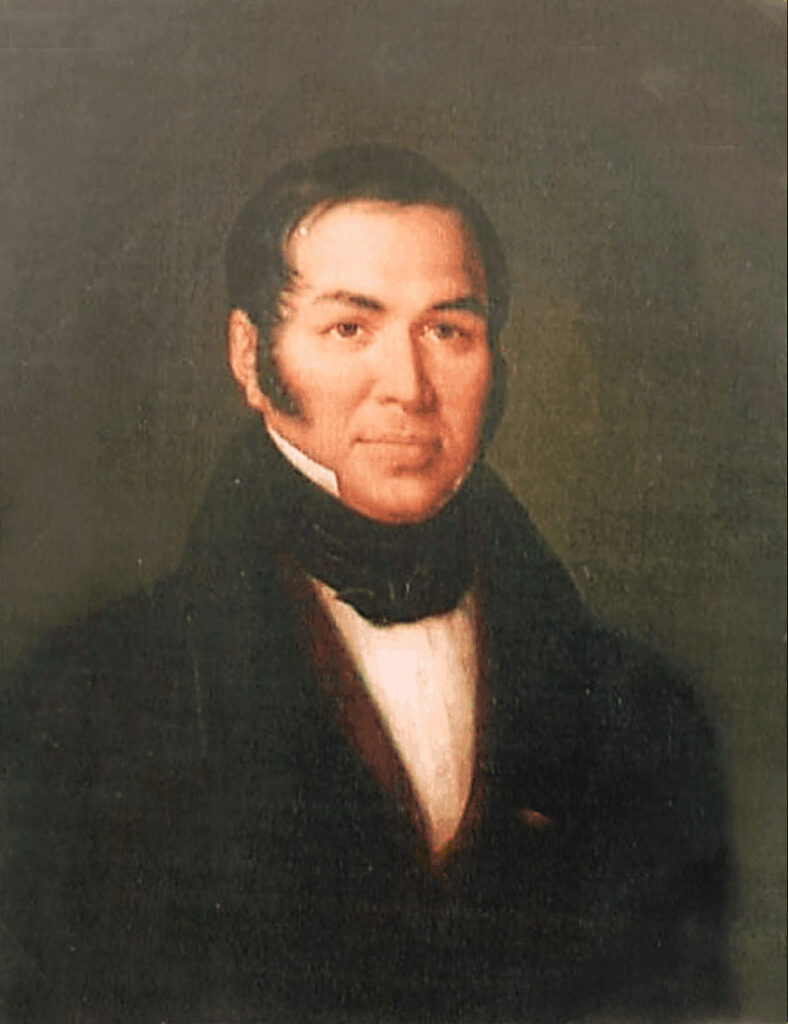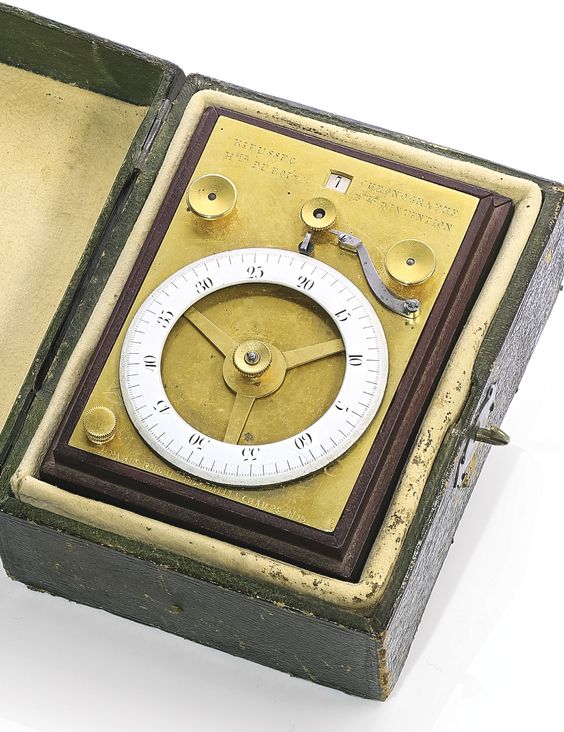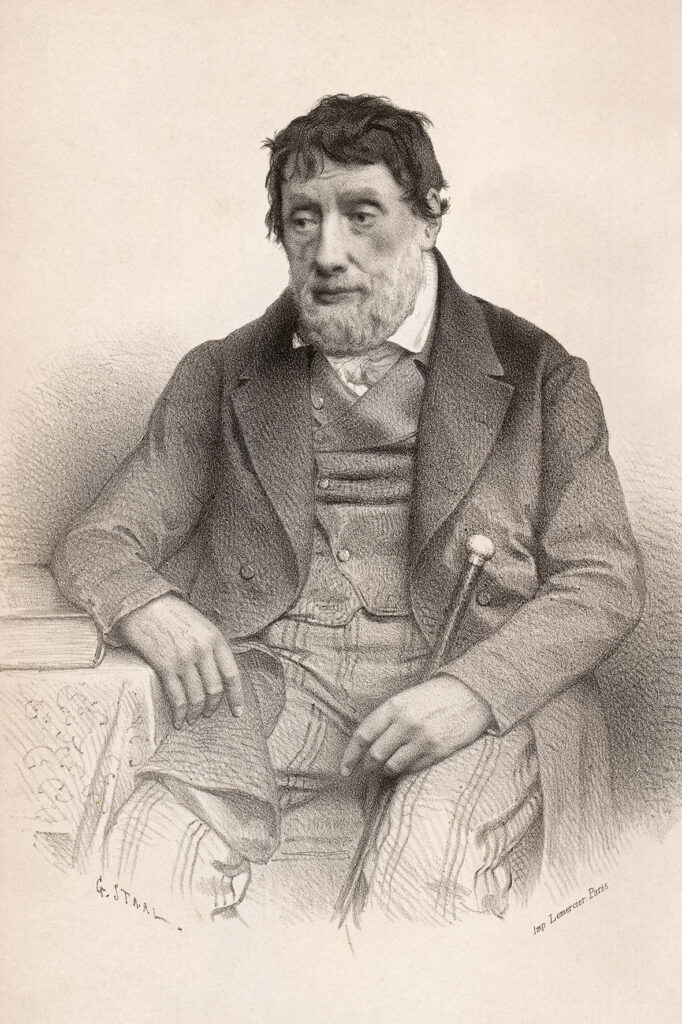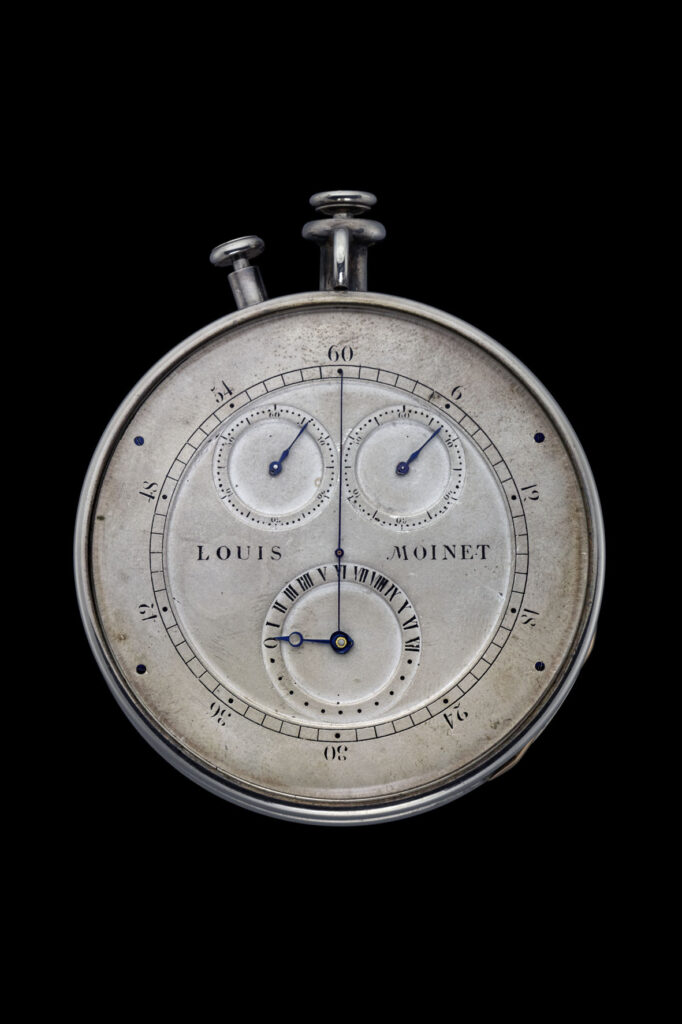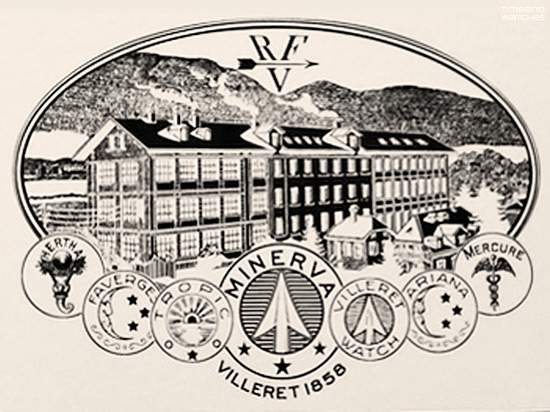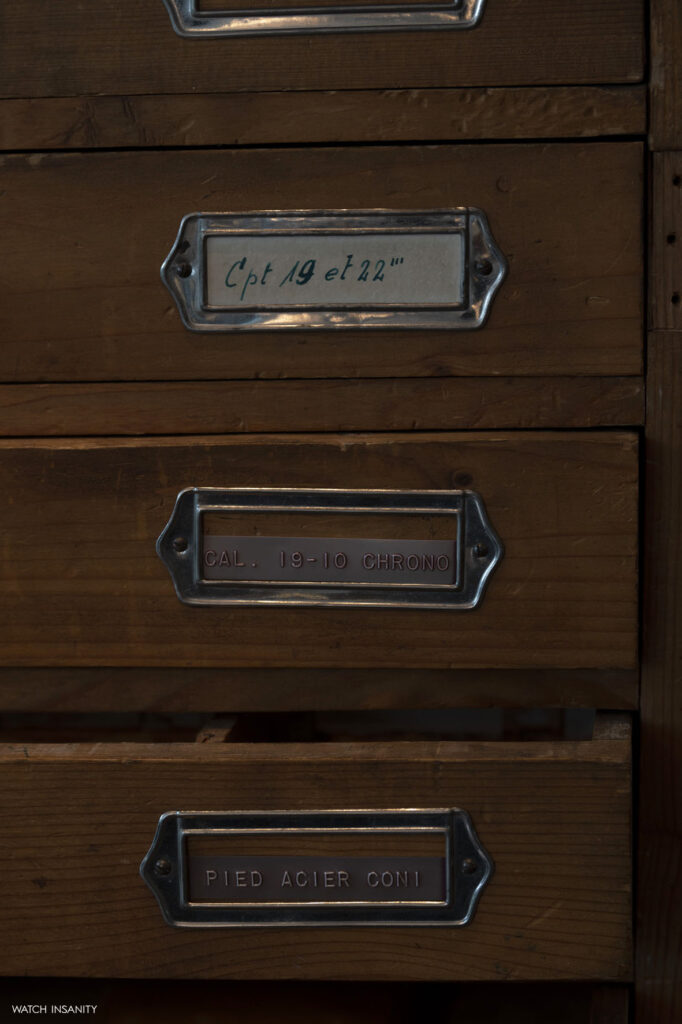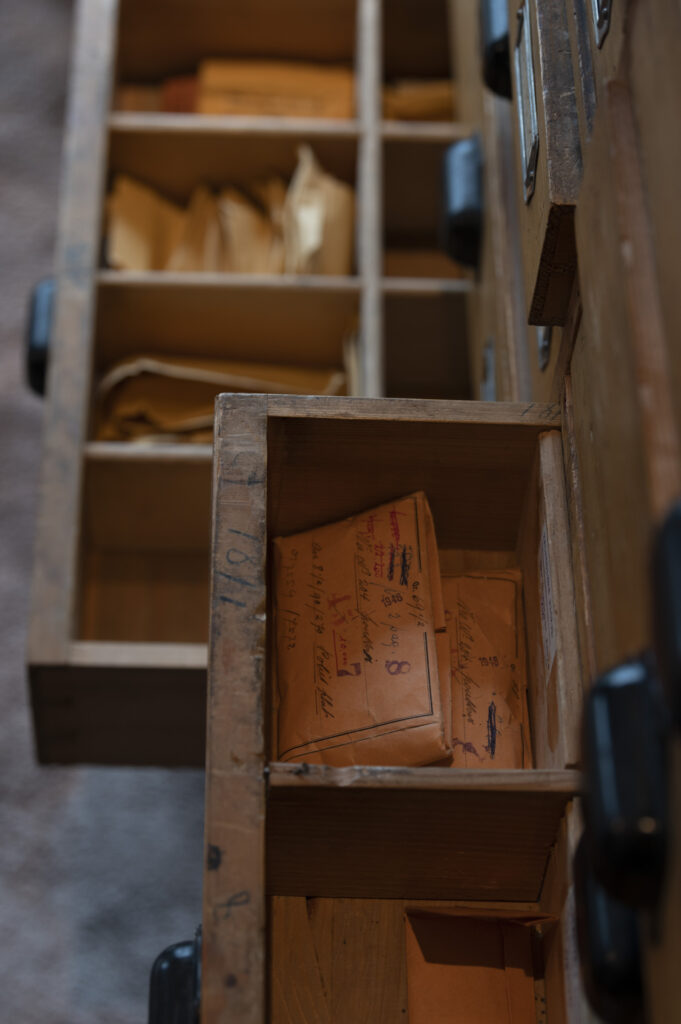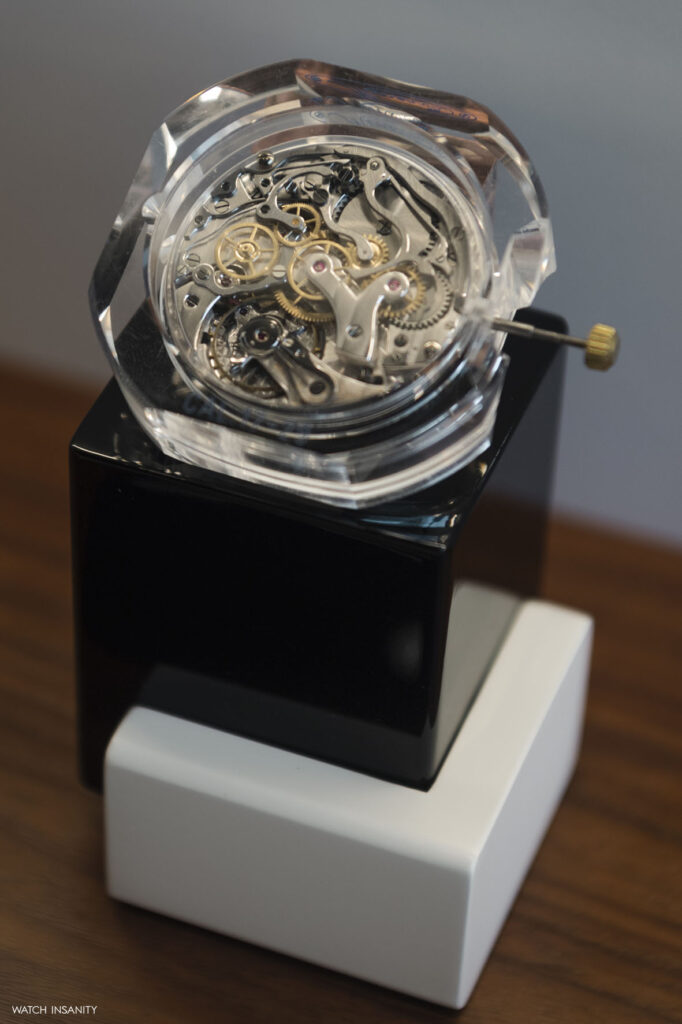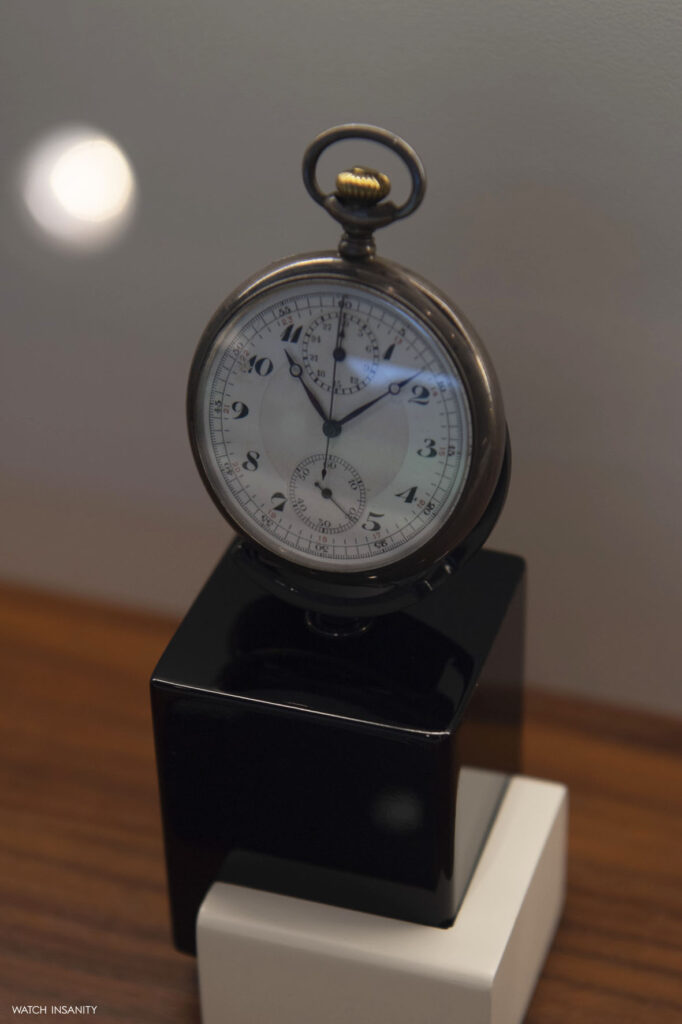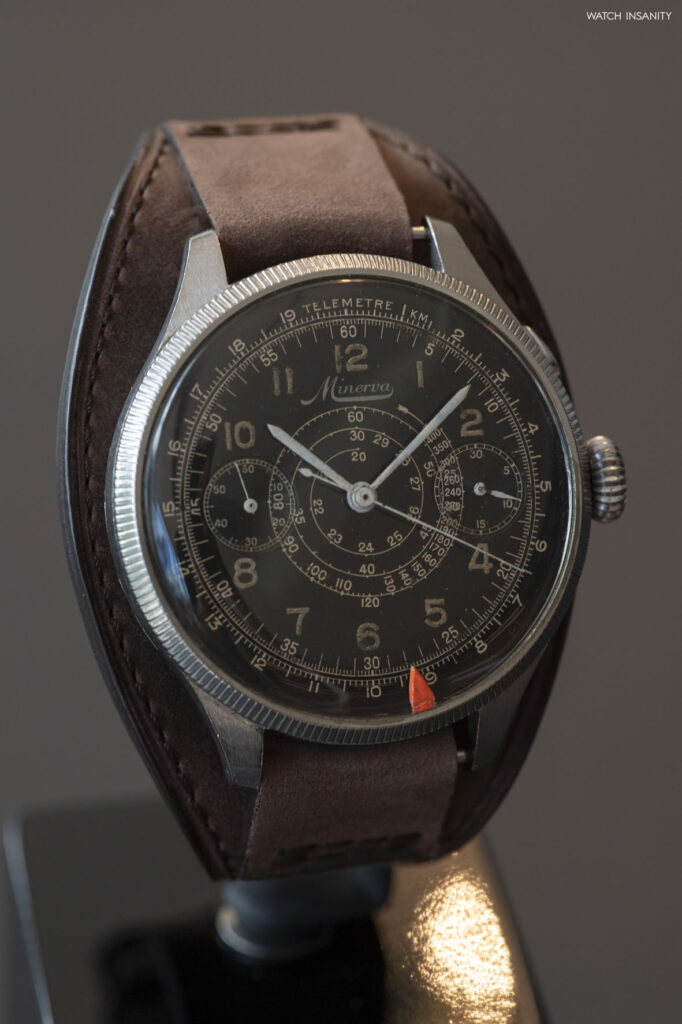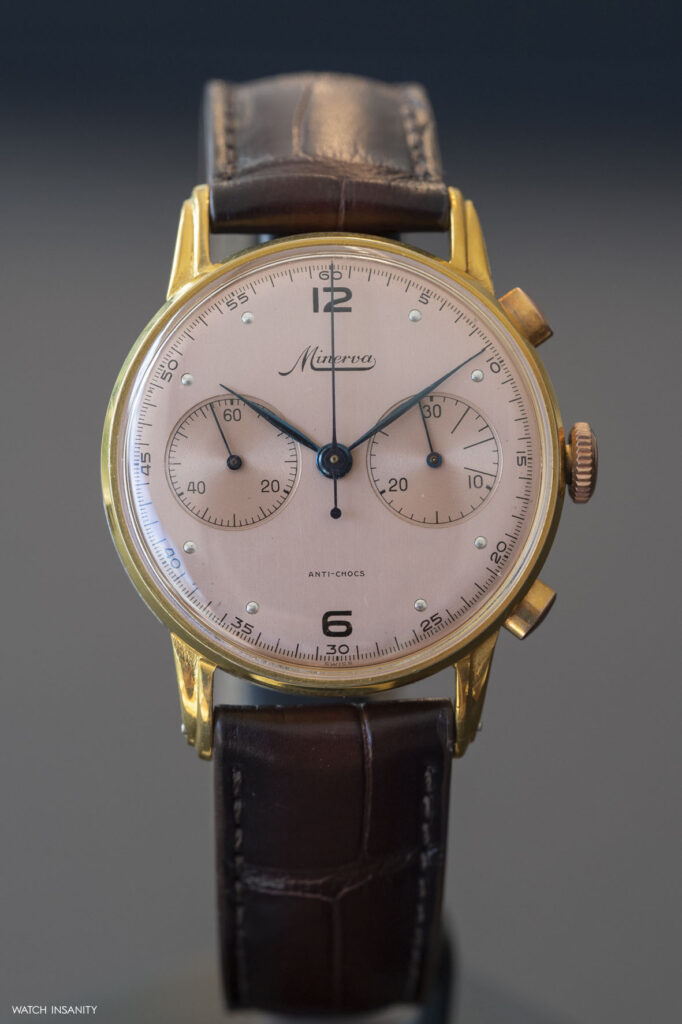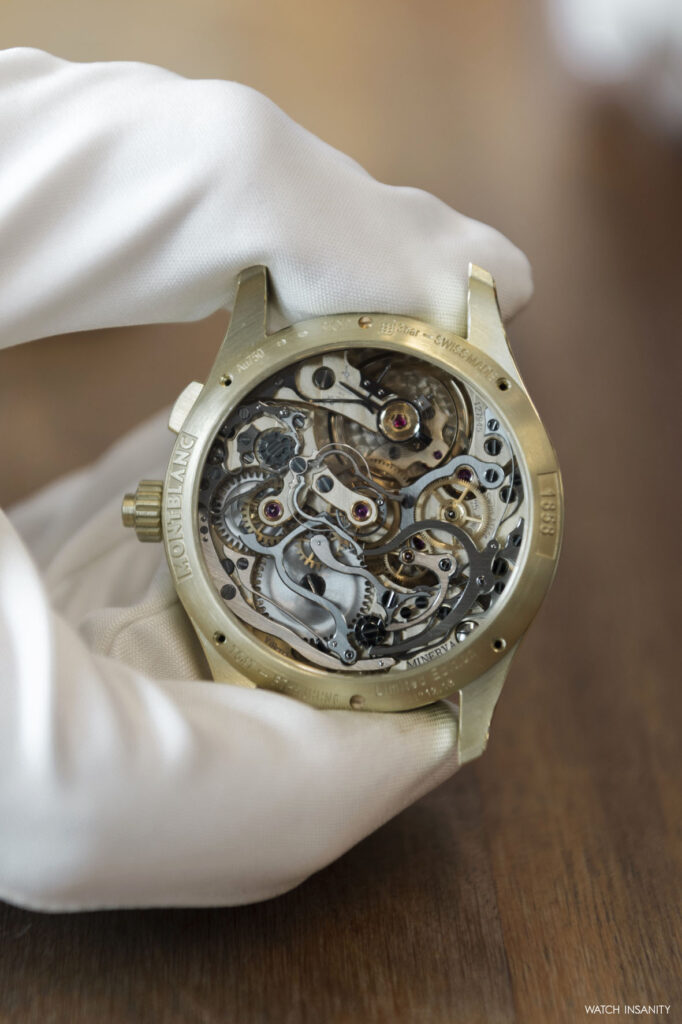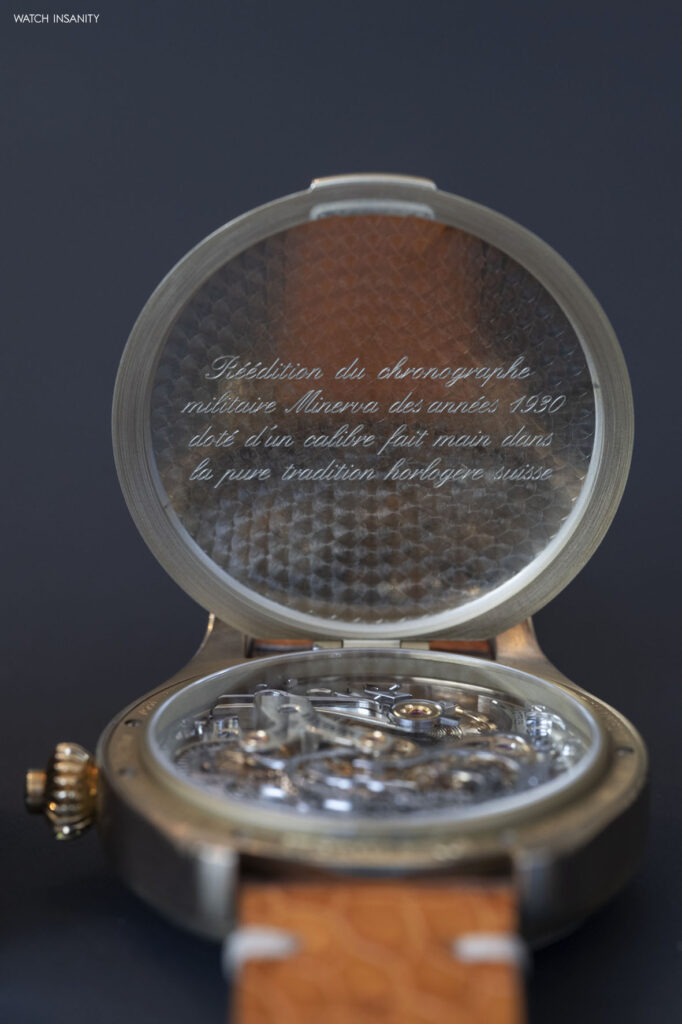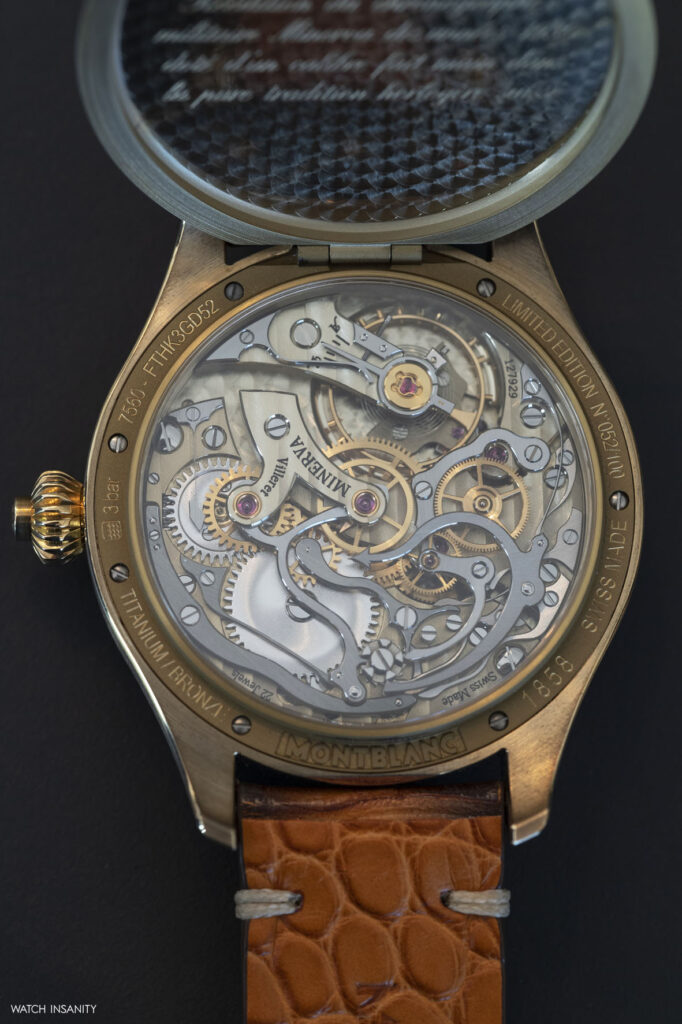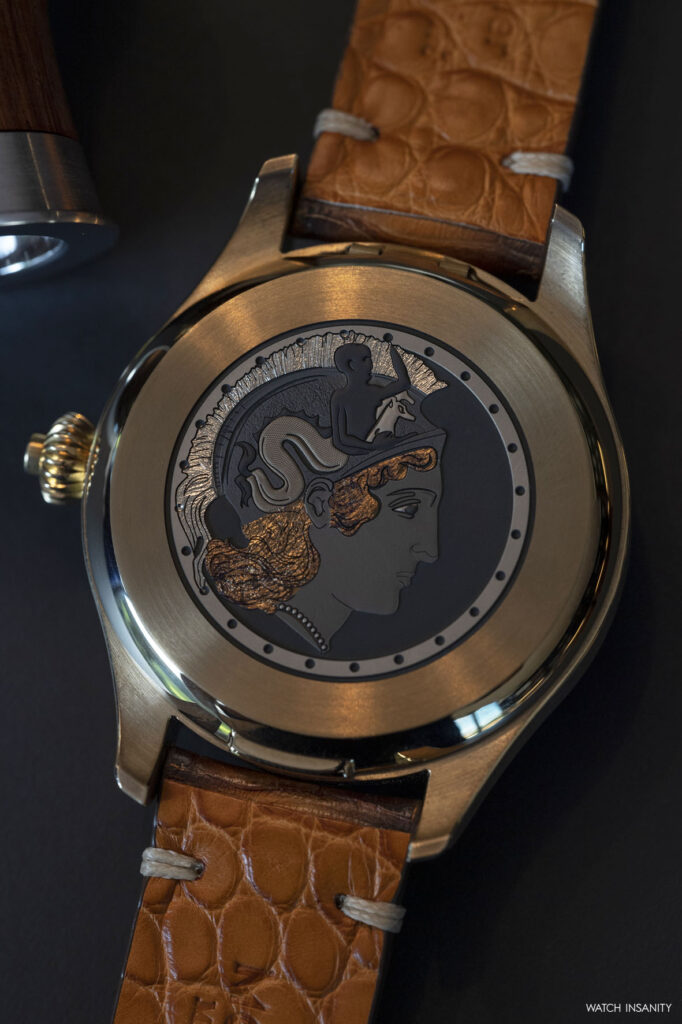Minerva, Montblanc, the Chronograph – A Love Story
21 December 2021Words always have a meaning. How many watch enthusiasts once asked themselves: why is the chronograph called this way? Wouldn’t it be worth remembering, given that we are talking about one of the most loved complications, in which numerous brands excel?
Even those who don’t know ancient Greek know that when a word has the suffix “graph”, writing has something to do with it. But what does a chronograph – an instrument that actually measures short time intervals using one or more scales and one or more hands on a dial – write?
A BRIEF HISTORY OF THE CHRONOGRAPH
Today, the chronograph does not write anything, but at the beginning of the nineteenth century, when it was invented, it did. In 1821, Parisian watchmaker Nicolas Mathieu Rieussec presented to the French Academy of Sciences his own instrument designed to measure each horse’s race time during the races that took place at the Champ-de-Mars in Paris: a chronometer designed to reliably measure the horses’ competing time.
The system, which Rieussec later patented, worked thanks to a hand equipped with a small ink reservoir; the chronometer worked with a double fixed indicator drawing a black mark on two rotating counters as each horse, not just the winning one, crossed the finish line. An invention to which the Academy recognized the merit as the “ability to instantly indicate the first and last moment of several successive time intervals by means of permanent and visible signs on a moving dial.”
Still in France, in 1816, the watchmaker Louis Moinet had developed his “Counter of Thirds”, a pocket watch with a central hand that could turn one revolution per minute and be started, stopped and reset by a button. Designed for astronomical measurements, its escapement vibrated at 216,000 vibrations / hour and the mechanism was completely immersed in oil. But it didn’t have parts that literally wrote. So, if the first chronograph remains an invention by Moinet, the name of the instrument is tied to Rieussec.
The chronograph has come a long way since then: it has been progressively improved with the addition of new technical details, and integrated into timepieces, first in the pocket watches and then in the wrist watches. Just to name the most significant stages, let’s mention the heart-shaped cam invented by Adolphe Nicole in 1844, which allowed the use of the three basic functions of the chronograph: start, stop and reset. These features were operated by a single button until 1933, when Breitling added a second button to reset to zero.
In 1936, Longines invented the flyback function, which allows to reset and restart the chrono hand while the watch is still running, while in the 1960s there was a rush to create the first automatic chronograph. On the one hand, the Chronomatic consortium made up of Heuer, Hamilton-Buren, Breitling and Dubois Depraz, on the other Zenith, and yet on the other Seiko.
Chronomatic presented Caliber 11 on March 3, 1969; Zenith presented the El Primero prototype on January 10 of the same year; while Caliber 6139 entered the market in the summer of 1969. In all this, however, there was a brand that had begun working on chronographs at the beginning of the 1900s with excellent results: Minerva, integrated into Montblanc since 2006 as a manufacture for haute horlogerie movements.
THE BIRTH OF MINERVA
Founded in 1858 by brothers Charles and Hyppolite Robert in Villeret, in the Bernese Jura, the company was first called “H. & C. Robert“, and then “C. Robert” when only Charles remained. In 1878, his sons Charles and Georges took over the management of the company, and Yvan Robert also joined in 1885. The company name was changed to “Robert Frères Villeret” and the new RFV logo with an arrow was introduced.
The company began to register trademarks in 1886, starting with Mercure or Merkur, then Minerva in 1887, Ariana and Tropic in 1898, and after changing name and business name often, in 1923 it became “Fabrique Minerva, Robert Freres S.A.”, and finally, in 1929, “Minerva S.A.” –retaining until today the logo with the arrow.
In 1895, “Robert Frères Villeret” began the production of their own watch movements and pocket watch cases, while the first Minerva caliber was a pocket movement with a cylinder escapement. The company named each major movement in sequence, starting with Caliber 1 and continuing through the number 55. Today it produces the numbers 15, 21, 22, 62 and 65.
The search for aesthetics in mechanics and the highest technical quality has always distinguished and still distinguishes the calibers that come out of the Minerva manufacture in Villeret. Beyond the finishes of the single parts, the entire design of the bridges, gear trains and base plates aim for harmony and balance, and makes each movement a work of art.
The result, visible through the sapphire crystal caseback, is very close to a sculpture, to a picture framed by the case and characterized by three-dimensionality that enhances the depth of the whole, base plate after base plate.
The unmistakable signature of the Minerva movements is the V-shaped bridge, whose design has been registered and protected since 1912. A tribute to the village of Villeret, which has hosted the manufacture since its birth, and a reference to the arrowhead of the logo.
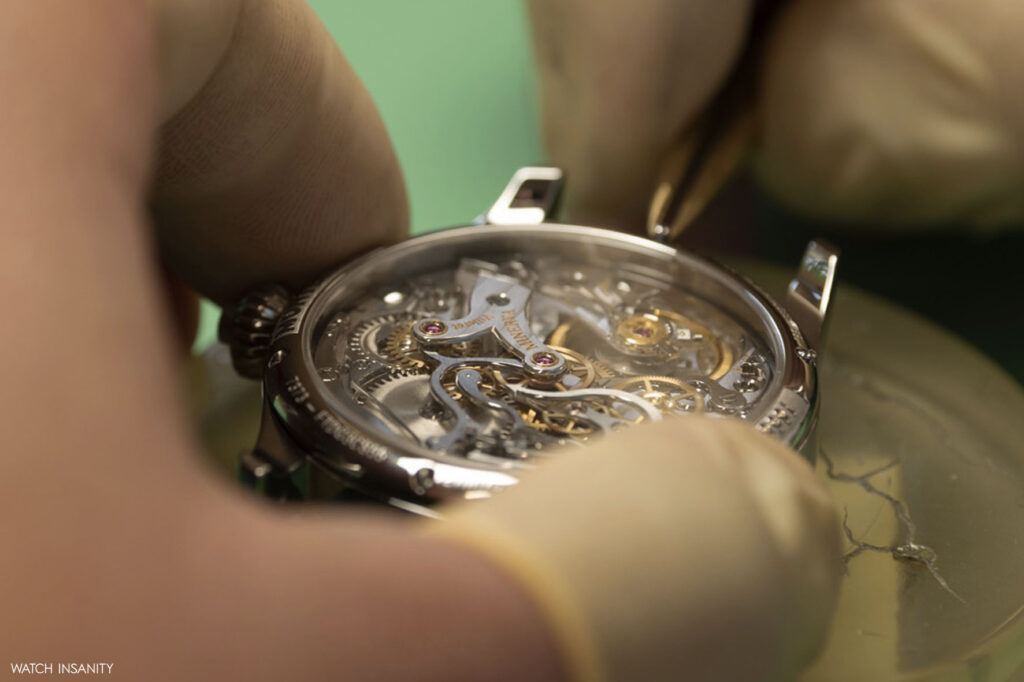
MINERVA AND THE CHRONOGRAPH CHALLENGE
In 1908, the manufacture – which as we have seen was still called “Fabrique Minerva, Robert Freres S.A.” – began to produce the first chronograph based on the 19-09 CH caliber; a pocket instrument without the hours totalizer, but with only the minutes register on a 30 or 45 base. Later calibers 12-12 and 9 and ¾ -19 were born, with refined movements, 17 jewels and Breguet spiral, and the production of wrist watches started in 1923. The caliber 13-20 CH, a column wheel chronograph with Breguet spiral, soon brought Minerva to the attention of the industry as a manufacturer of excellent movements.
Then there where successful split chronographs with 19-25 or 19-39 caliber, or brilliant ideas like that of Jacques Pelot, who replaced the flat springs used to activate the mechanisms with the much more resistant spiral springs.
These inventions and patents were not only serving Minerva but the chronograph’s main uses as well: sports and the military. There are many models from the 1930s and 1940s equipped with a telemetric scale on the dial, through a calculation based on the difference in the propagation speed of sound compared to light; this scale made it possible to get an indication of the distance of a visible and audible event, such as the launch of a bomb.
It was used in warfare to calculate the distance of enemy artillery. Since light travels faster than sound, the moment a soldier saw the glare of enemy fire, he activated the chronograph; he stopped it when the bullet exploded, calculating the distance it had traveled on the telemetric scale. Fortunately, today this scale is more of a homage to the past than a work tool, and is on a Montblanc watch that celebrates the pure spirit of Minerva.
MONTBLANC 1858 SPLIT-SECOND CHRONOGRAPH LE 18
The Montblanc 1858 Split-Second Chronograph LE 18 was released in 2021, in a limited edition of 18 pieces, with a brand new Lime Gold case, an alloy composed of 18-karat gold, silver and iron which has shades of yellowish green. The green of the indexes, the minute track and the telemetric scale contrasting with the golden sunray dial is something that is worth seeing live, especially with the right lighting. The green Arabic numerals are completely made of Super-LumiNova, crafted according to a patented process to create a borderless shape.
The hand-wound Montblanc MB M16.31 caliber beats in the 44 mm case. Produced in the Villeret manufacture, it is a real pocket movement of huge dimensions – 38.4 mm in diameter and 8.13 thick – adapted into a wristwatch. Visible from the sapphire crystal caseback, it alternates circular satin finishes with Cotes de Genève finishes; it beats at 18,000 vibrations / hour and has a power reserve of 50 hours. It is a monopusher split-second chronograph, a concentrate of complications that only a handful of brands can create. Thanks to the legacy of Minerva, Montblanc is among them.
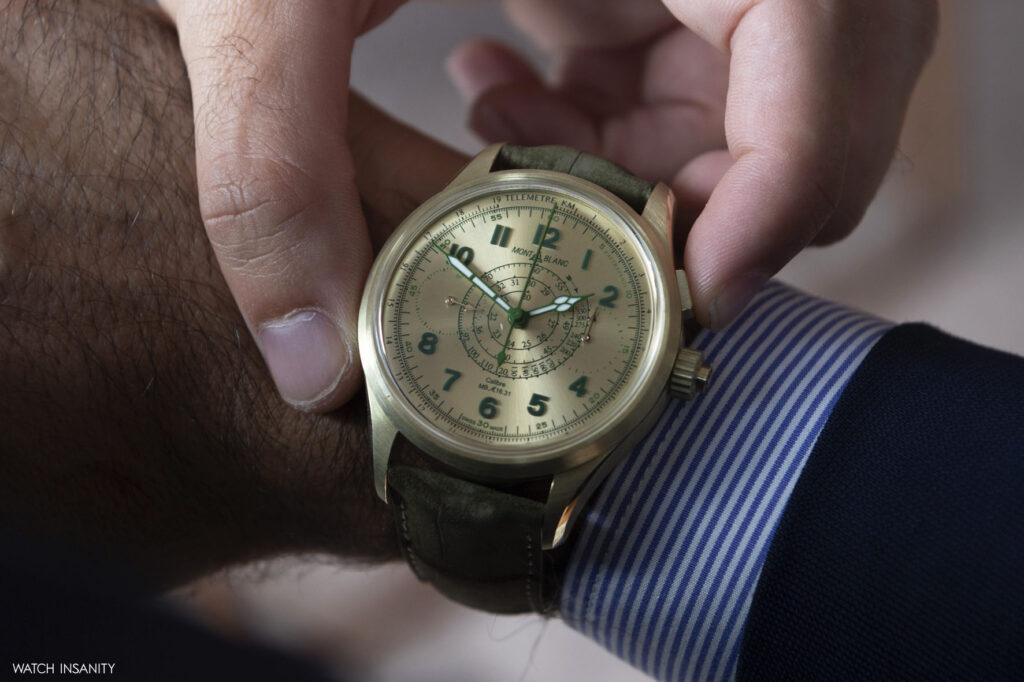
MONTBLANC 1858 MONOPUSHER CHRONOGRAPH ORIGINS LE 100
Speaking of Minerva’s legacy, also inspired by the military world, Montblanc created the Montblanc 1858 Monopusher Chronograph Origins Limited Edition 100: a tribute to a chronograph made by the manufacturer in the 1930s. An aesthetically very faithful homage to the original, starting with the important size of the case, 46 mm.
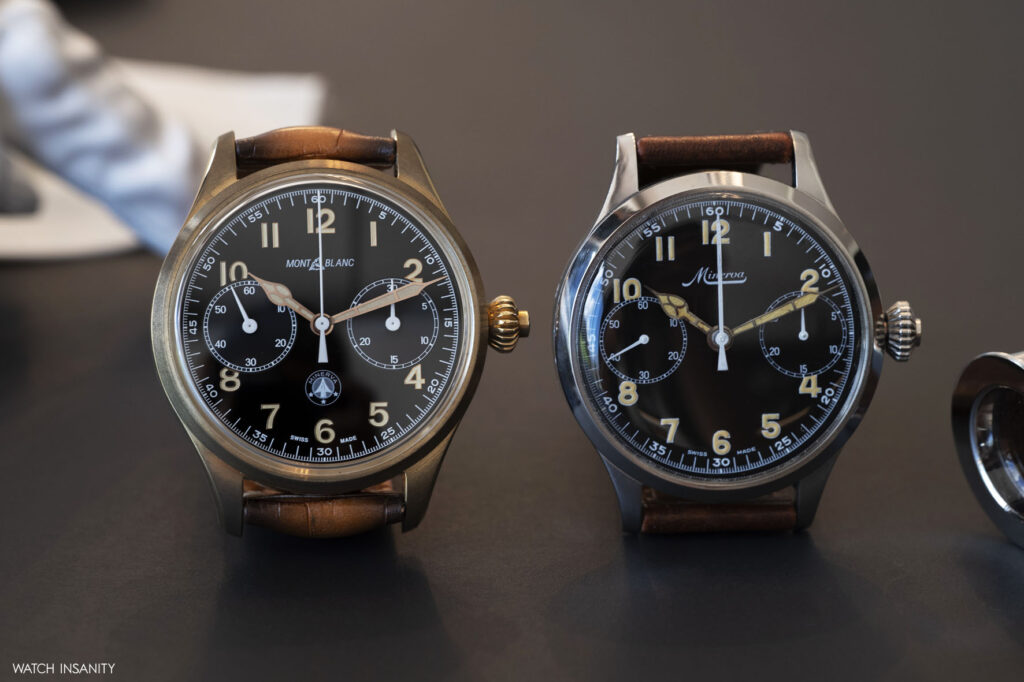
The bronze case (the original model was in steel) with a black dial gives the watch a “new vintage” look. The retro look is echoed by the bronze-coated titanium hinged case back, as in the watches intended for officers, which links it even more to the original model preserved in the Montblanc Museum. The luminescent Arabic numerals, the gold-colored cathedral hands and the warm brown alligator strap bring the Origins LE very close in aesthetics to the 1930s piece, and truly connote it as a vintage-inspired chronograph.
Production is limited to only 100 units and in the inner part of the case back are engraved the words “Ré-édition du chronographe militaire Minerva des années 1930 doté d’un calibre fait main dans la pure tradition horlogère suisse” (“Re-edition of a Minerva military chronograph from the 1930s, equipped with a hand-made caliber according to the pure Swiss watchmaking tradition”).
The hinged caseback allows you to see the Montblanc MB M16.29 in-house hand-wound caliber with base plates and bridges in German silver, crafted with a wide range of fine finishes. The MB M16.29 beats at 18,000 vibrations / hour and supports a column-wheel chronograph operated by a single button on the winding crown.
MONTBLANC STAT LEGACY RIEUSSEC CHRONOGRAPH
And to conclude as we started, with Nicolas Rieussec, we remind you that Montblanc payed homage to the Parisian watchmaker with a chronograph dedicated to him. Produced from 2008 and belonging to the Star Legacy collection, the Nicolas Rieussec Chronograph stands out for the two aligned rotating discs of the chronographic 30 minutes and 60 seconds with double fixed indicator, which recall the rotating counters of the Rieussec ink chronograph of 1821. Both the counters and the off-center hour and minute ring are rounded to create a three-dimensional effect on the dial.
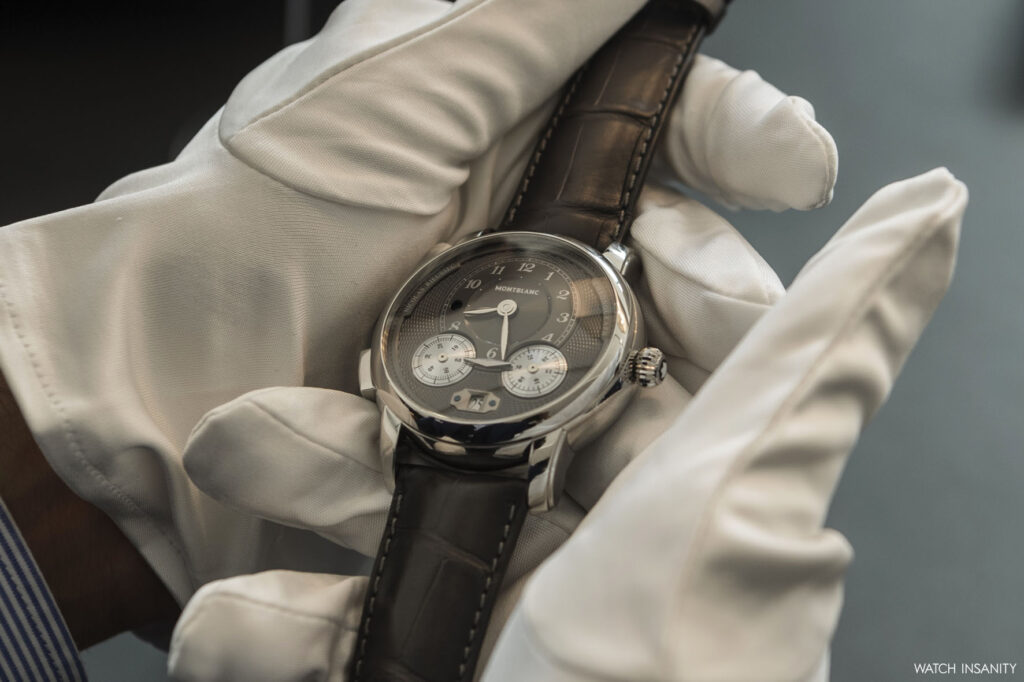
In its latest evolutions, in addition to the two rotating discs, the Nicolas Rieussec monopusher chronograph has kept the automatic caliber MB R200, with column wheel and vertical clutch, twin barrel and a power reserve of 72 hours. The movement also activates the date function, at 6 o’clock between the two rotating discs, and the dual time function with the day / night indication display positioned on the hour disc, at 9 o’clock.
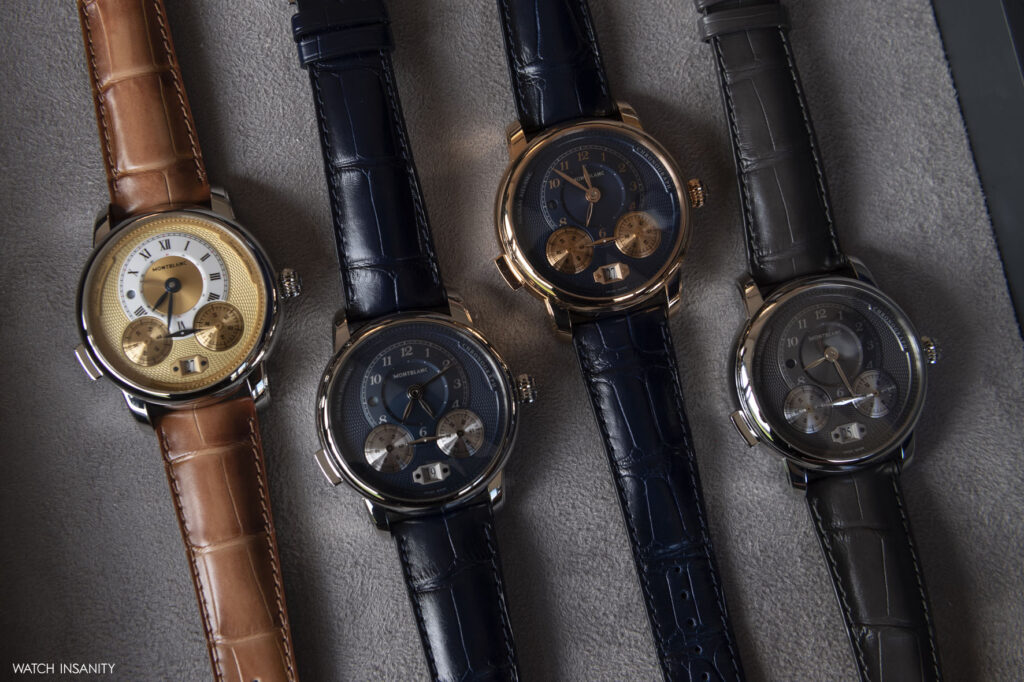
In the most recent version of the watch, the case is in steel and the guilloché dial with grain d’orge motif is anthracite gray, combined with a Sfumato alligator strap matching the same color. For the Only Watch 2021 charity auction, Montblanc has created a unique Nicolas Rieussec piece with a gold-colored dial and orange details (Only Watch’s “signature”) on the “chemin de fer” minute track on the dial, on the skeletonized hand of the second time zone, on the double index of the chronograph, and on day 6 of the date as a tribute to the day of the auction (November 6, 2021).
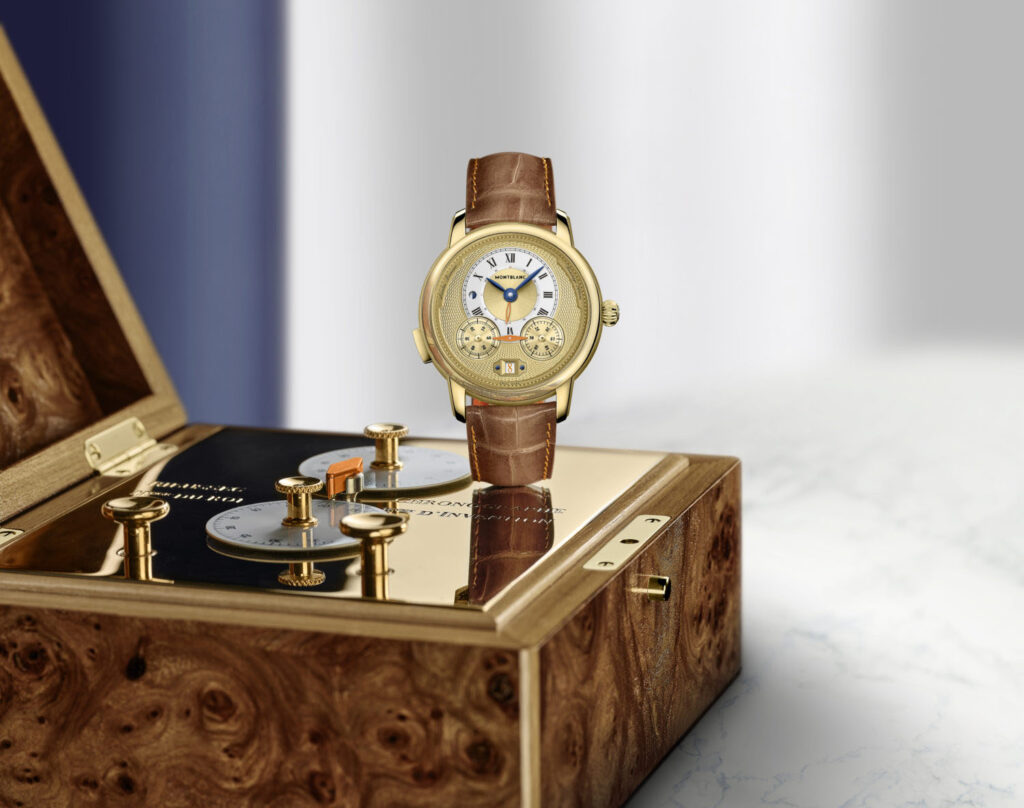
Montblanc has also created a walnut briar replica of Rieussec’s 1821 ink chronograph. It is equipped with two white enamel rotating discs that can be operated and stopped using a button on the left side. Reset is done manually by rotating the counters helped by the central axes, as on the original device.
So, if the history of the chronograph etymologically begins with Nicolas Rieussec, what better way to pursue it than with the legacy of Minerva and Montblanc?
By Davide Passoni

